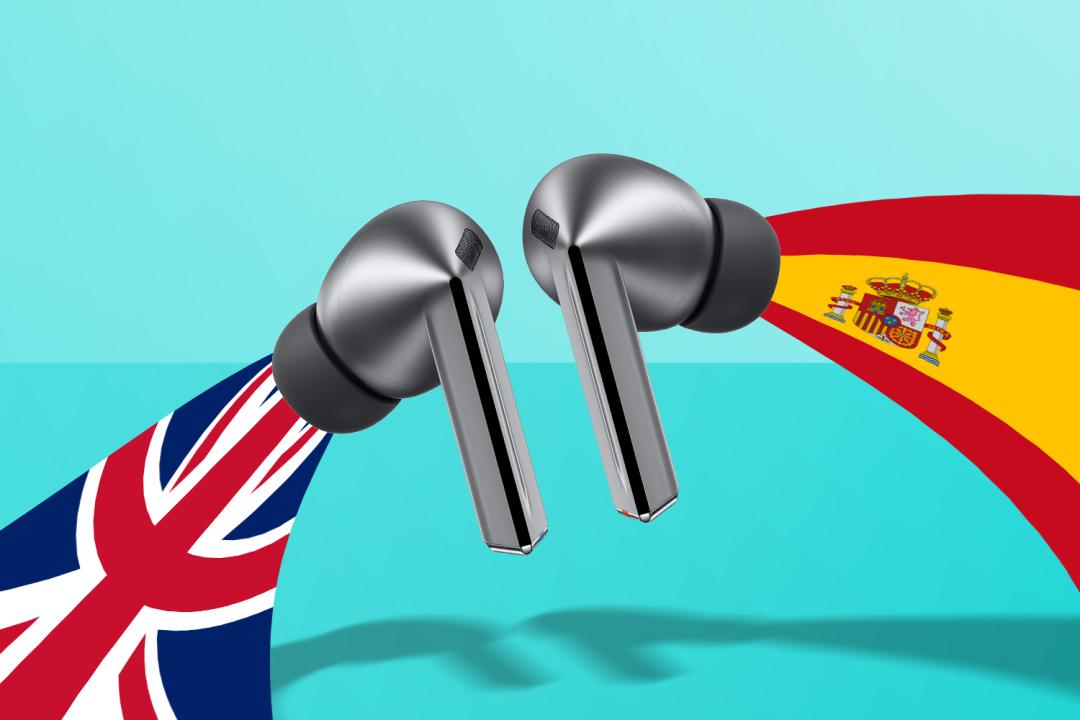Why I think auto-translate earbuds might be a bad thing
Samsung’s Galaxy Buds 3 Pro have thrust auto-translate earbuds back into the spotlight, but problems with translation tech remain

Every day, I dutifully open Duolingo. Sometimes after only the 17th notification. Alas, I’m of an age and sensibility where almost every lesson goes in one ear and out the other. Still, I can now write ‘yo quiero una manzana’ without looking anything up. Which should be handy the next time I fancy an apple and am in a Spanish supermarket. Or an orchard. However, the arrival of Samsung’s Galaxy Buds 3 Pro – billed as auto-translate earbuds – made me question whether I’m going about things the wrong way.
If the hype is to be believed, AI and bleeding-edge tech have conquered language barriers. Surely, it’s now time to tell that stupid green owl it can get stuffed? Well, no. Because the problem with this tech is that it is varying degrees of hype. Which isn’t to say it isn’t useful and that it doesn’t have handy use cases. It can be and it does. But we are a long way from the real-world equivalent of a TARDIS or small fish that proved the non-existence of God conveniently translating every language imaginable into one you happen to speak.
One-way traffic
For one thing, auto-translating earbuds don’t come with loudspeakers attached. So while the right tech can have a crack at translating incoming speech, you’re out of luck when you want to reply. Unless the person you’re chatting with owns relevant tech too. In which case, congratulations on being wealthy and having a ‘wealthy person’ radar, meaning you only bump into other folks who own cutting-edge kit. For most, though, we’re in the territory of ‘good for lectures, but probably not for ad-hoc casual chats’.
Even when you downgrade to tech that isn’t so ‘magical’, challenges persist. Translation apps don’t need auto-translate earbuds. And you can hold a conversation – albeit an awkward one – with two people on a single phone, using languages you’ve downloaded offline. But then you might face the hurdle of popular languages dominating.
Apple Translate offers a notably smaller selection of languages than Google Translate. And even Google’s app isn’t all-encompassing. Although we should be grateful neither have done a Duolingo, which values fictional languages over real-world ones. Want to converse in High Valyrian or Klingon? Welcome aboard! Keen to learn Icelandic? Tough.
Talar þú íslensku?
Mind you, even the most comprehensive translation tech has its limits. Languages are complex and nuanced. Yet the AI that increasingly underpins translation apps is dumb. While it confidently translates anything you throw at it, it’s often confidently wrong, whether that’s earbuds or an app. You may end up with word salad – the equivalent of running text through dozens of languages for amusement. The snag: you won’t realise it, leading to potential embarrassment and blunders.
So, yes, technology can be incredible. Auto-translate earbuds that live-translate feel like magic. But like magic, there is sleight of hand. We all crave shortcuts that allow us to focus on our passions – and for most people that isn’t learning languages. For now, though, putting in the hard graft remains the best approach.
Perhaps in the future, we’ll have a real Babel Fish (minus the slime, hopefully). Today, though, auto-translate earbuds are useful in an emergency or for getting the gist of a lecture in a foreign tongue. But we should be realistic about their limitations. And maybe avoid using them for conducting important business in Icelandic.



